Blue Flag F1: What does blue flag in Formula 1 means?
Respecting the blue flag is crucial for a safe and fair F1 race for drivers and fans.
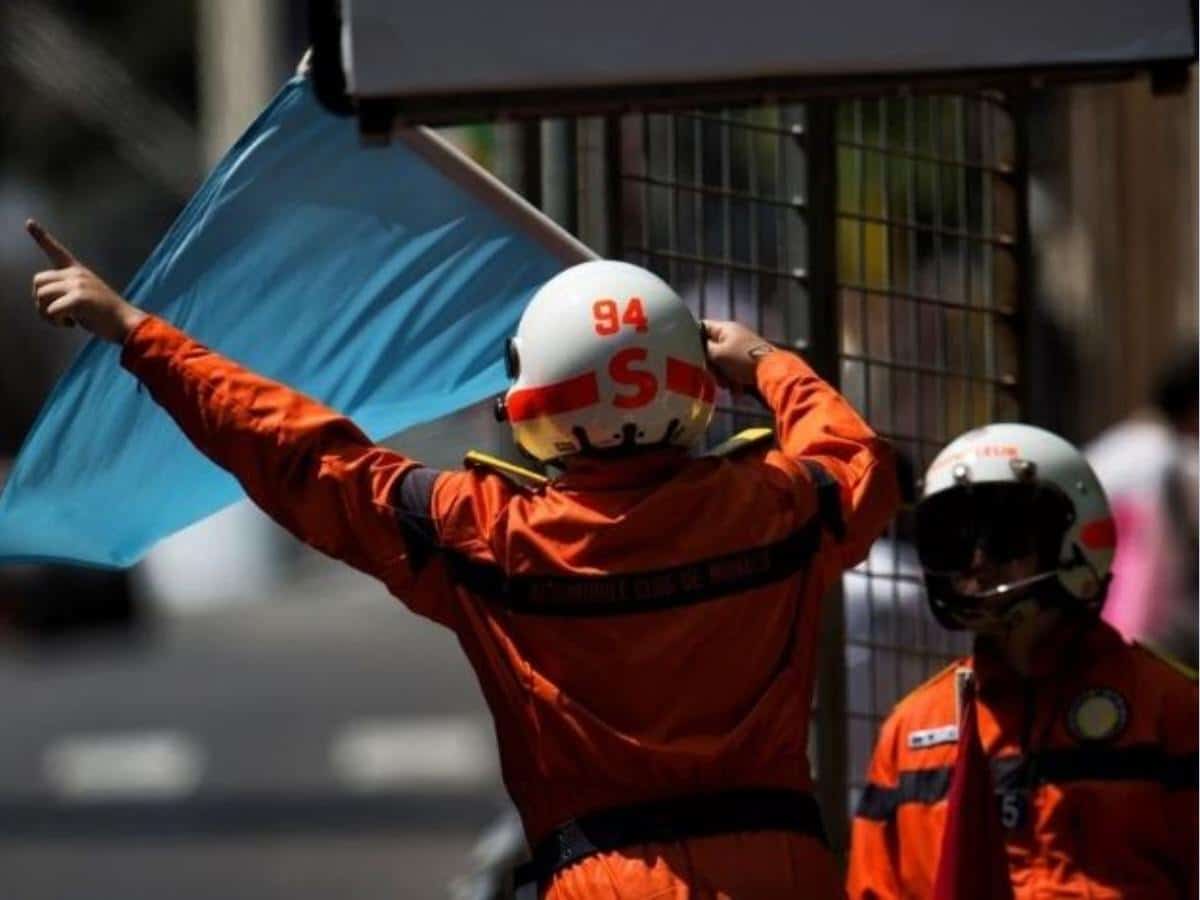
Marshall waving a blue flag (credits: The SportsRush)
🔍 Explore this post with:
The iconic radio message, “Blue flags Michael, Blue flags!…” from the Mercedes team boss, Toto Wolff, is a phrase that every Formula 1 enthusiast has undoubtedly heard. It evokes the question of what precisely the blue flag represents in F1 racing. The flag is used according to the orders from the Marshaling post.
Blue flags are an essential aspect of Formula 1 racing that every fan must be familiar with. These flags serve as a signal to slow drivers or drivers ahead of the race leader to move over and allow faster cars to pass them. When marshalls wave these flags on the track, it alerts the driver to give way to a faster car behind them.
During the 2021 Spanish Grand Prix, Mercedes team boss Toto Wolff radioed his driver, Lewis Hamilton, with the message, “Blue flags Michael, Blue flags!” This was due to the slow driving of Nikita Mazepin‘s Haas car, which hindered Hamilton’s progress in pursuing his rival, Max Verstappen, on the race track. Toto promptly contacted the FIA office, then race director Michael Masi, to address the issue to let Hamilton pass through.
In F1 racing, a blue flag serves as an indication that a driver who is one or more laps down must allow faster cars to pass them. Failure to comply with the blue flag rule can result in a penalty for the driver. During practice and qualifying, this flag is displayed when a slower car hinders a faster one.
Discover: Bahrain GP 2023 : Where and when to watch the opening race o?f the F1 season?
What is the purpose of Blue Flag in F1?

It is crucial for drivers to abide by the flag rules, and ignoring three consecutive blue flags can lead to penalties. In some circuits, marshalls use a blue panel instead of a flag to convey the same meaning.
Moreover, adhering to the blue flag rule enhances the safety of drivers on the track. As faster cars lap slower ones, it can be challenging to maintain control and avoid collisions. By moving over and allowing faster cars to pass, slower cars can reduce the risk of accidents and keep the race safe for everyone.
What does each flag mean in F1?

Yellow Flag
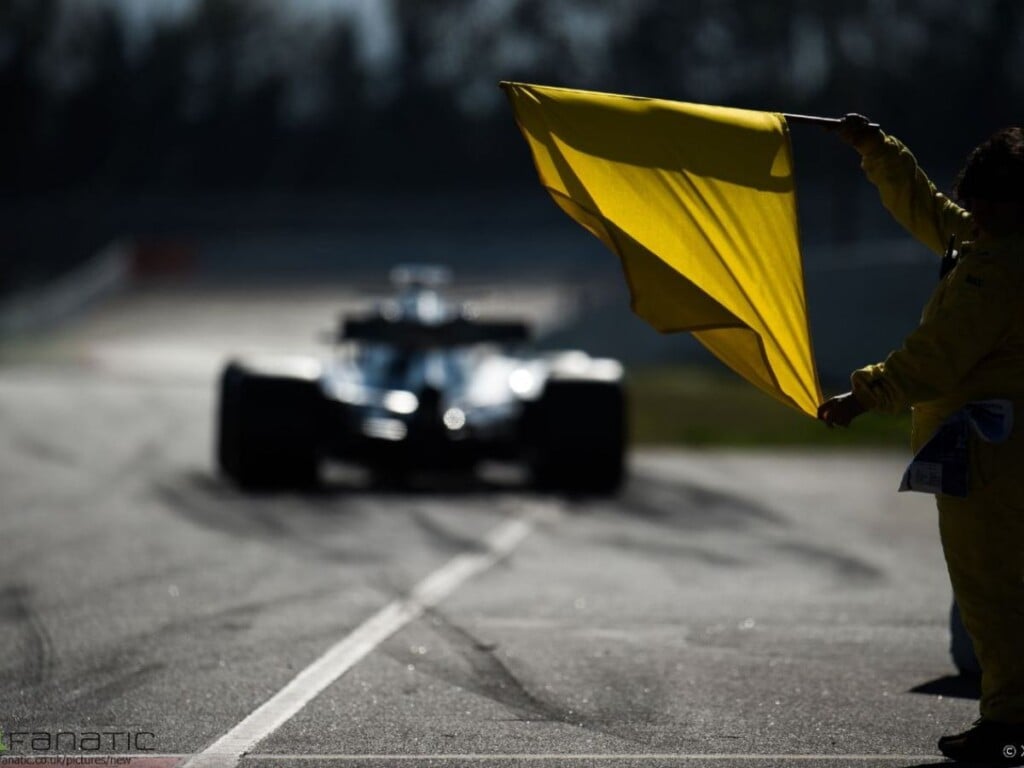
A yellow flag is used to highlight a hazard on or near the track when drivers are out on the circuit. The significance of the flag, however, differs depending on whether a single or double yellow flag is shown. If a single yellow flag is displayed, cars must slow down, avoid overtaking and be prepared to change direction because there is a danger beside or partially on the track.
When a pair of yellow flags are waved, vehicles must slow their speed substantially, not overtake, and be prepared to change direction or stop because there is a danger blocking the track and/or marshals working on or near it. If a driver is on a “meaningful lap” during practice sessions or qualifying sessions, they must establish that they did not attempt to complete that lap time at a reduced speed than intended by hitting the brakes. Otherwise, they risk being penalized in footballing terms and getting a Yellow Card.
Red Flag:
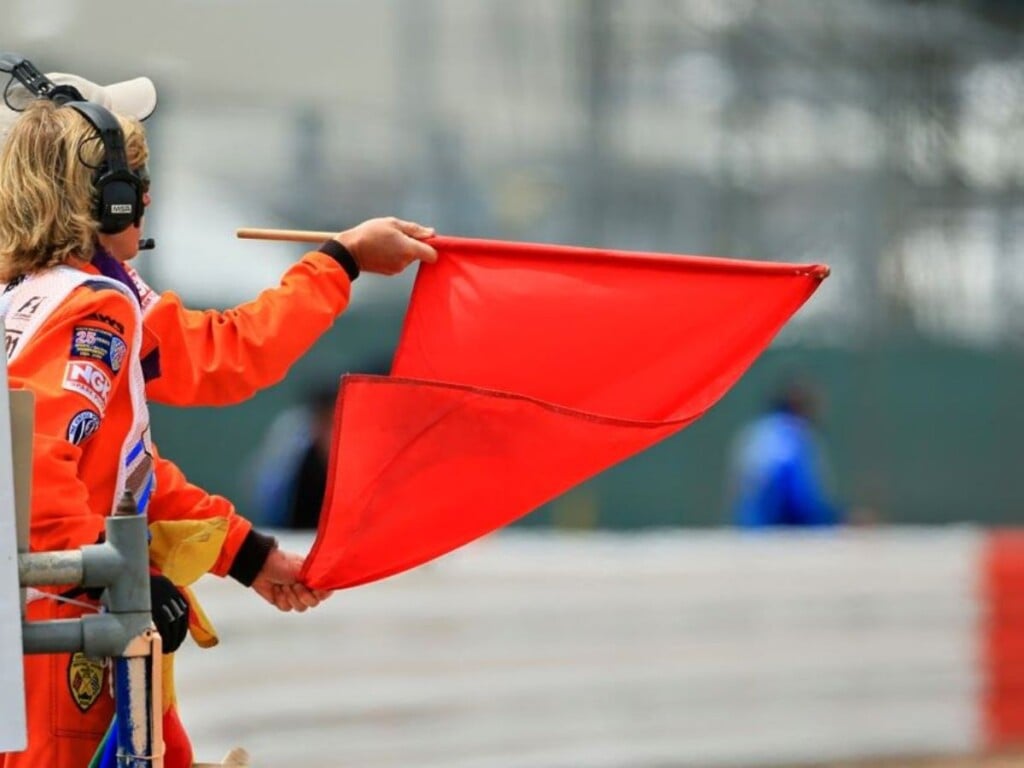
A red flag means that the session has been halted, and drivers must slow their pace substantially and return to the pit lane. It’s called a flag stoppage. Overtaking is strictly banned, and the session will restart with drivers in the order they were in when the red flags were displayed. Drivers must use caution on their way back to the pits since the track may be completely closed and service trucks may be present. Weather conditions and animals on track or accidents trigger a red flag if the track is considered unsafe for the session to continue. The race will restart after a specific time period.
Green Flag:
The green flag or green light serves as an all-clear signal, signaling that any incident that was producing a single or double-waved yellow has been settled and that the road is clear for racing.
Yellow and Red Striped Flag:
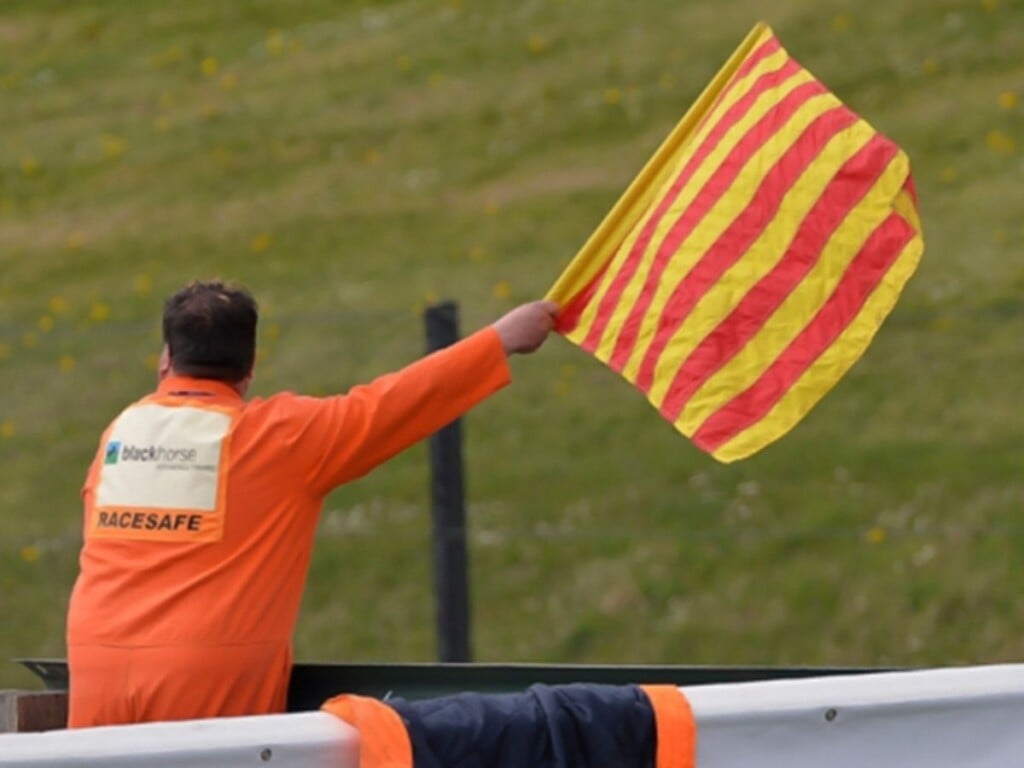
This flag, which is not waved, signifies an impending change in the track surface. It frequently notifies the driver that there is oil or water on the track ahead of the flag, indicating a decrease in grip and, consequently, a greater risk of losing control of the car if not taken care of. Simply put, when this flag is raised, it indicates that the track is slippery.
Black and White Flag:
The black and white flag, which is divided diagonally into a black and a white piece, is used to warn a driver of discourteous behavior. To identify the recipient of the warning, the flag is held stationary and accompanied by a display of the driver’s number. If a driver’s behavior does not improve after seeing the black-and-white flag, the next level of action will be a penalty.
Black and Orange circle Flag:
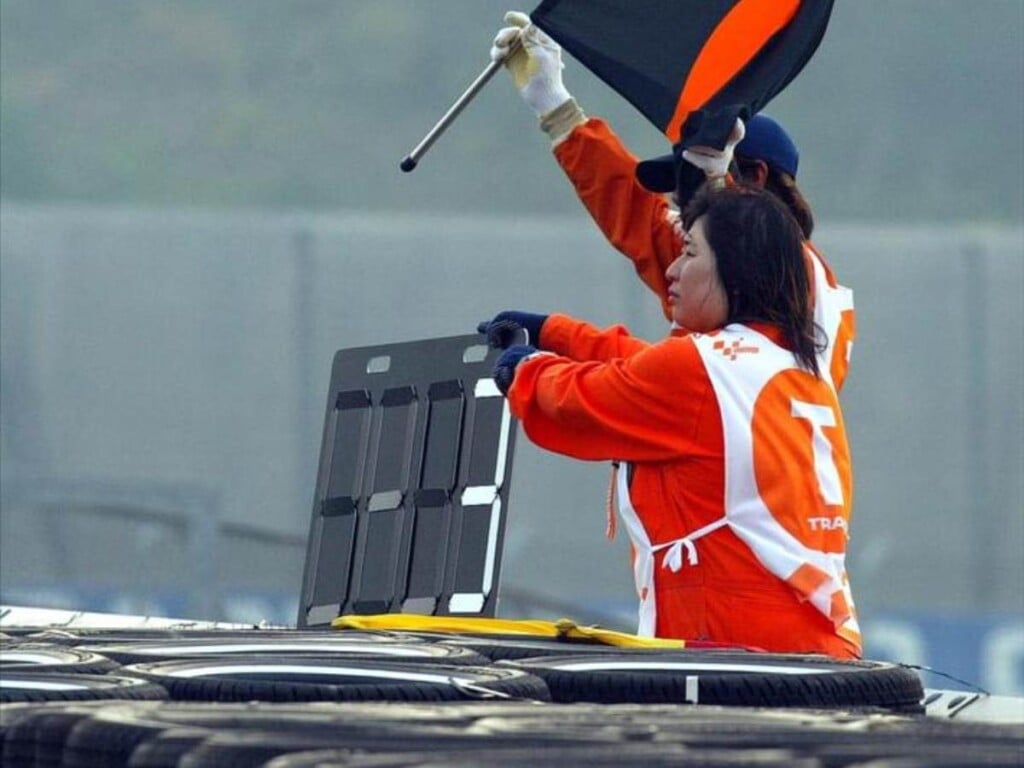
When a car has a technical issue that is “likely to jeopardize himself or others,” the black and orange flag is displayed. It has a black background with an orange central disc and is used to signal the driver to enter the pit lane on the following lap. For identification, the flag will be accompanied with the driver’s racing number. If the crew is able to resolve the issue to a tolerable degree, the driver may return to the track.
Black Flag:
A black flag indicates disqualification from the session and is uncommon in Formula 1. The flag will be shown beside the driver’s number, ordering them to immediately return to the pit lane and stop their engagement.
The White Flag:
This is used to denote the presence of a slow-moving vehicle, such as a racing car, a safety car, or even a medical car. It is often utilized at the end of practice sessions, near the final turn where the drivers practice their race start.
The Chequered Flag:
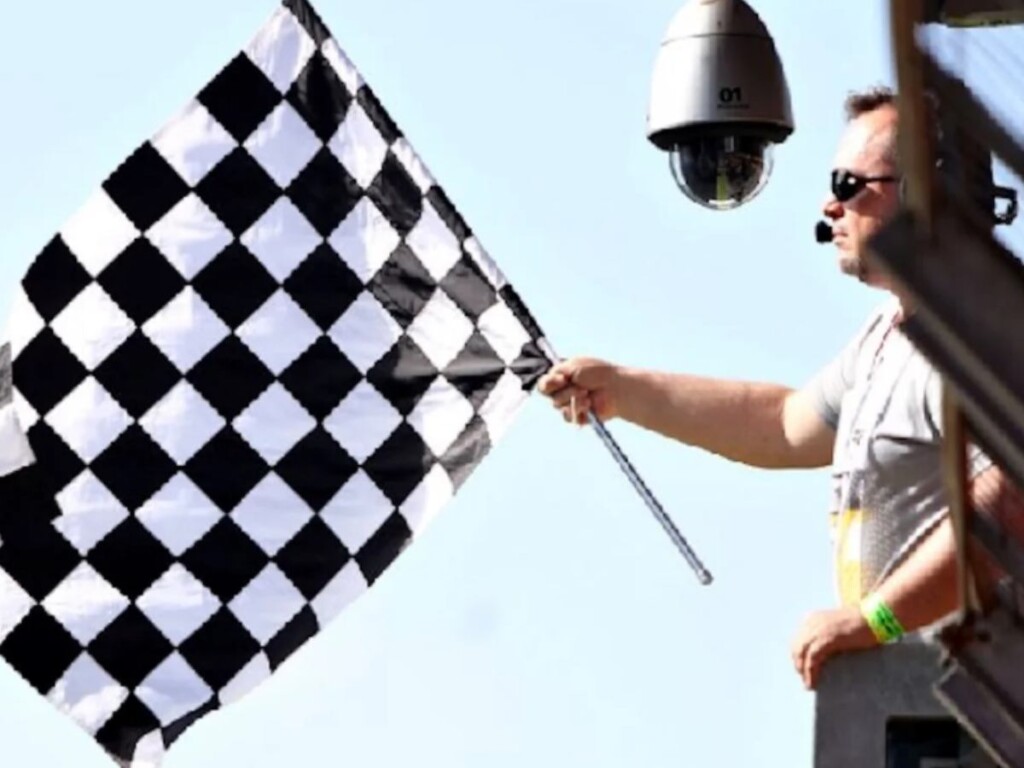
The chequered flag is Formula One’s most recognizable and renowned flag. This flag is raised to indicate the conclusion of any session, whether practice, qualifying, or racing. That is the finest sight of all for drivers who cross the chequered flag in first place during a Grand Prix since it indicates that they have won.
Flags play a vital part in Formula 1 racing since they convey critical information to the drivers on the circuit. Each flag has a unique purpose, from warning of possible risks with the yellow flag to indicate the end of a session with the chequered flag, and drivers must react accordingly. Knowing the various flags and their meanings is important not only for drivers but also for spectators, as it helps everyone to follow the race more carefully and appreciate the complexities of the sport. The effective employment of flags by race officials assures the safety of the drivers and marshals while also contributing to the race’s competitive integrity.
In case you missed it:
F1 drivers’ height and weight on the 2023 grid
Who are the youngest drivers ever to race in Formula 1?







